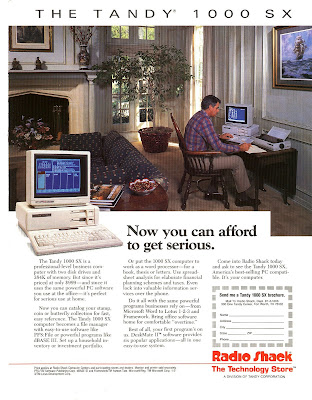
The news on RadioShack Corp. is not good. Sales are down in the current quarter by 15 percent, and the Fort Worth, Texas retailer has closed hundreds of stores.
Wall Street has all sorts of answers for why this Corner Electronic Geekfest Gathering Spot is failing, and they wonder why its cellular offerings are not doing well.
While solutions to the problems of Radio Shack are hard, the diagnosis to the answer to the problems of Radio Shack is simple. It is no longer what made it what it was. Radio Shack has ignored its well-developed store brands (Optimus, Minimus, Weatheradio, Micronta, Realistic, TRS, please click on image here to see some great examples at www.transistor.org), and has ignored its core consumer, the radio geek. It was first, after all, a store for ham radio enthusiasts. (It has also squeezed together its two words Radio Shack, and we are ignoring this name change because it looks like a misprint when we write it.)
These answers to Radio Shack’s problems are not something that BrandlandUSA has inferred. Instead, these could be easily figured out by comparing what a store looked like during the chain’s period of growth, vs. today. If you go into a store, it looks like a cellular bucket shop. There might be two 30-year-old electronics geeks at the counter, but they would be dealing with the intricacies of cellular plans, and not figuring out knotty (literally) cable connector problems for consumers. There would be a paltry selection of electronics equipment for sale, all national brands that could be found more cheaply at Best Buy and Wal-Mart. Many parts would now be hidden in the back, and all manner of pieces of electronics would not be sold at all. Today, the selection would be no larger than a home electronics department of a hardware store. An old Radio Shack had all sorts of racks with plastic bags hanging. Today, it’s all about blister packs and a paltry-piddly number of electronics. A Wal-Mart does better by most counts.
So what should Radio Shack’s Julian Day do? The good thing is Julian has plenty of cash, but he won’t need much to fix the problem. He should grab a few well-meaning veteran employees from around the company, sit them in a room, and let them vent about what the company was, and what made things sell. He should then ask them to go to the closest Radio Shack store, and re-merchandise it without the assistance of store planners, designers or market researchers.
Get past the embarrassment of that faked resume. Instead, ask the old guard why Radio Shack’s store brands were dropped in favor of national brands. Ask why the majority of store space is all about clean, open aisles and massive displays, when what brings people into Radio Shack is lots of shelves of itty bitty parts and pieces. He might ask why Radio Shack no longer sells standout unique products. Through the years, Radio Shack was known for developing its own products, some repackaged from other makers but essentially unique to Radio Shack. Many products were standouts. Some were hilarious, others odd; the company even sold a Micronta Bio-Feedback Monitor. Click on the image above to see a bit of that history at Sarah Lowery’s brilliant website www.transistor.org.
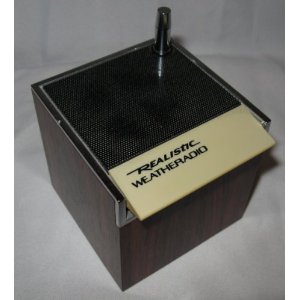 Ask why the cute Minimus line of small speakers now is now gone, and the store brand name was changed to Accurian. For electronics nuts, the tiny, black Minimus 7 speaker was a brilliant deal. Ask why there are only a handful of products with the Weatheradio name. The Weatheradio was a great piece of product design; a fake wood box with a white piano key button on top and an antenna sticking out the top. Any person, rich or poor, who had boats had a Weatheradio. It was cool. Bring it back; a Radio Shack without a fake-woodgrain Weatheradio (or other radio) is like an A&P without Eight O’Clock coffee and coffee grinders at the checkout.
Ask why the cute Minimus line of small speakers now is now gone, and the store brand name was changed to Accurian. For electronics nuts, the tiny, black Minimus 7 speaker was a brilliant deal. Ask why there are only a handful of products with the Weatheradio name. The Weatheradio was a great piece of product design; a fake wood box with a white piano key button on top and an antenna sticking out the top. Any person, rich or poor, who had boats had a Weatheradio. It was cool. Bring it back; a Radio Shack without a fake-woodgrain Weatheradio (or other radio) is like an A&P without Eight O’Clock coffee and coffee grinders at the checkout.
Ask why store brands for Radio Shack are all confusing, and a devoted fan of the store might be confused about the offerings. He might ask why there are only a handful of electronics kits for boys. He might ask why Radio Shack no longer sells an equivalent to the TRS-80 computer. We know that millions are using Linux at home for the fun of it. Why not a cheap base model Linux for Geeks to give their sons for entertainment? Take your staff out of polo shirts and put them in short sleeve button downs with pocket protectors.
Best Buy and Circuit City have geeks who visit your house to fix problems. Why not do what customers are used to doing, and have them (surprise!) bring their problems TO the real life geeks at Radio Shack. Perhaps a few of those cluttered aisles could be pushed back a bit in the evening in favor of foldout chairs, and Radio Shack could offer classes in how to work various electronics equipment. I bet a seminar teaching iPod or Shutterfly would be a hit with anyone over 40.
Day might then ask a few target consumers what they want. Radio Shack has a number of them. There is Electronic Enthusiast, male, 29, and too focused on video games to ever bother attending Engineering School. He likes to go in Radio Shack and see what’s there, and buy it. By career, Electronic Enthusiast might be your tech support guy who is in a cubicle down the way. Then, there is Science Smartie; this might be the parent of Electronic Enthusiast, who actually has an advanced degree. Science Smartie likes buying Radio Shack’s electronic kits for nephews, sons and neighbors’ kids. There is also Confused Woman (is this sexist? who cares, it’s true, though there are plenty of Confused Men), a person of any age who goes into Radio Shack for the solution to a particular electronics problem that must be solved in the household. Confused Person also goes into Radio Shack to shop for children or grandchildren. She (or he) knows that if it is about electronics, Radio Shack has answers.
Julian Day should know that there are millions of American men who operate on their own PCs at home, adding memory, modems and such. Think of all the men who work as tech support in American corporations. These are the main target market for Radio Shack. There are certainly a million men who work in electronics, and they all have sons. For these Electronic Geeks, Radio Shack is not just a retail store, it is a place where if you go on Saturday, the place where the Geek will find kindred souls.
Radio Shack should be like an old fashioned hardware store where folks gather on Saturday. In fact, any person confused by electronics likes to go into such a place. A confused electronics shopper might not only get advice from the store clerk, others in the store who are gathering might have the same problems, and they might offer up advice too, or just want to talk about weather or vent about awful cellphone service.
Radio Shack is not thought of as a national asset for science and engineering, where amateurs and professionals share common ground. But it is, or should be, such a place. It is a commonly told story that Steven Jobs built Heathkits. The old Heathkit market is the Radio Shack market. It is a market for enthusiasts.
Of course this is overstatement, but there is a nugget of truth in the statement that Radio Shack’s enthusiasm for electronics helped nurture a nation that once (and sort of still) leads technology. When science education failed, at least the enthusiasts like Steven Jobs filled in the empty holes. Please, Mr. Julian Day. You have a great American icon in your hands. Don’t look across the street to Best Buy to figure out where to take Radio Shack. Best Buy does a great job. Instead, look inward, backward and then imagine life about 10 years forward without Radio Shack. That would be a sad scene indeed.
In the old days, what was good for GM was good for America. In this computer age, what’s good for Radio Shack is good for America.
Read our other posts on Radio Shack:

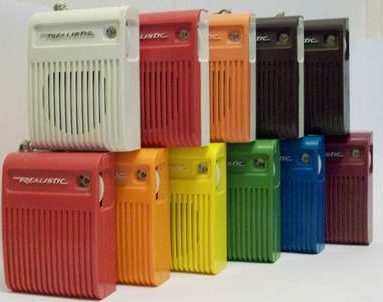


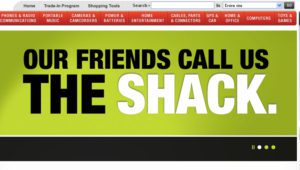

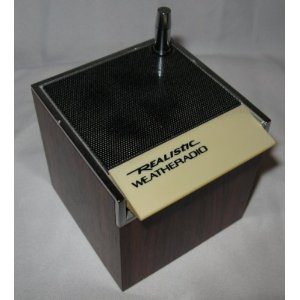


To the person asking the first questions about margins say a MP3 players cost 200 retail Radio Shack be lucky to make 10% its usually 5-8% on name brand electronics. On a part which RS owned the plant where it was made profit margins are 90% I remember in 2000 a RF Mod. would retail for 30 dollars and cost was like under 2 bucks it was like that with most branded RS parts. Alot of items cost 5-10 cents and we sold them of 1-2 dollars. Thats what made RS great was the parts and RS own branded electronics. What killed Radio Shack and I was thier was in 98-2001 RS got greedy and wanted the big sales and high dollar transactions which start with cell phones. During that time Sprint had just launched thier cell service and gave RS a sweet deal. Stores would make on one cell phone sold 500-600 in sales plus we made even more selling the accessories and service plans along with the phones also the company would get a peice of the pie if the customer stayed with sprint. So in short RS bet the farm on being a wireless store and also selling internet services. So in short they killed the hand that fed them for 40+ years. Since then horrible RS leadership has made bad partnerships gone thru several wireless companies i’m surprised Sprint is still in the stores.
I use to love to go to radioshack when I was a kid, even my first real job was on a RadioShack Store… Now I’m just sad to go to Radioshack and dont be able to find nothing… the company isnt even the shadow of what use to be, no more components for proyects, I cant even find CB radio parts! (I was looking for a 3/8″ mounting stud for a Ham antenna) RadioShack with no CB’s?
I really dont think RadioShack is never going to be what use to, no only because its going to be hard to find some one with the courage to take the company back to the golden era, but the new generations are evolving, they are not interested on DIY proyects, on Cb radio or Ham radio… so I will say that RadioShack is going to pass to be a memory for many of us of the time when a CB walkietalkie was the coolest way to talk to your friends on the block, and the smell of a hot soldering iron and flux was on the air.
Mike..I totally agree on the catalog. And there is so much empty space on the sales floor. It’s all a big bore.
I do hope they survive though as if they can make it, someone can get it back to where it needs to be.
Radio Shack’s movement to “The Shack” is just another step in the wrong direction. It is sad for a company that I worked for for quite awhile, and grew up as it being my favorite place to shop seemingly sinking further into oblivion. I went to the local RadioShack to look around the other day, and walked out empty handed. That never used to happen. Another huge mistake of RadioShack was eliminating the catalog.
Optimus has been spotted in a December newspaper circular
What is the margin on a part vs. something like an mp3 player? That might show whether this strategy will work?